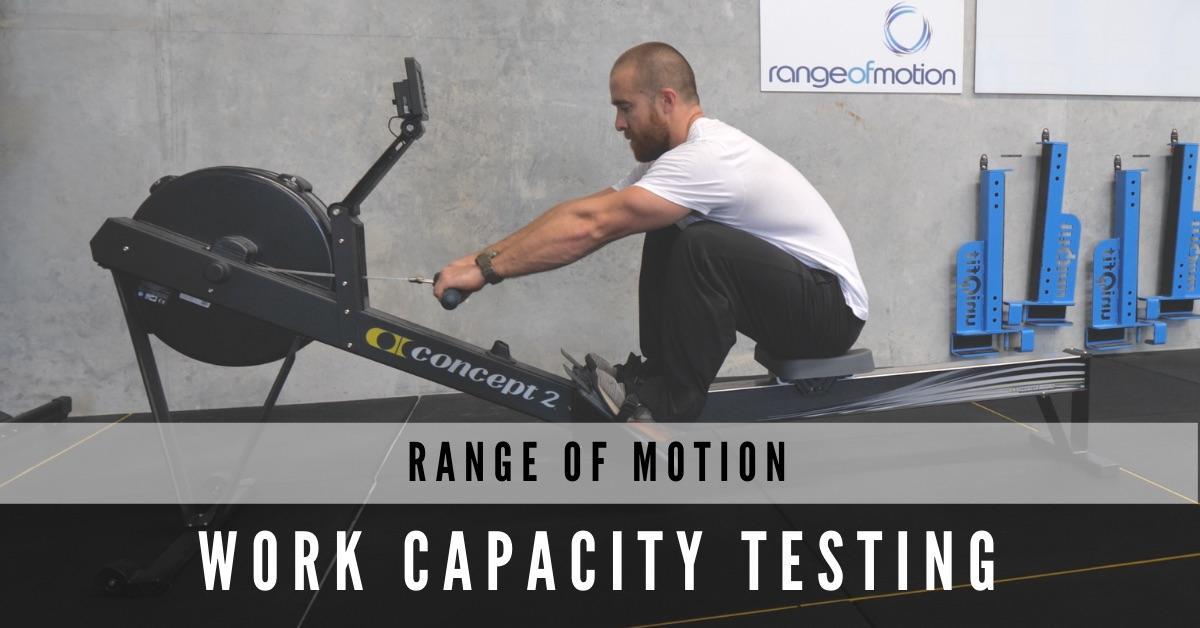To understand the need to test different intensities and lengths of effort, it’s important to understand the basics of how the body produces energy. Basically, there are different systems that are specialised in producing energy for different lengths of time.
- There’s a system in the body that fuel very short, intense exercise, lasting only a couple of seconds (this system is called the ‘ATP Phosphocreatine’ energy system).
- A second system fuels exercise lasting around one minute, this is the ‘Glycolytic’ energy system.
- And a third system, the ‘Oxidative’ energy system, fuels exercise for long durations.
We use the following tests, which offer a comprehensive snapshot of work capacity across these various energy systems.
The two 20 second tests are completed simultaneously (that is, you can get both results from one 20 second test). After you’ve rested to complete recovery following the 20 second test, you can complete the 20 minute test on the same day (though they must be completed in that order). However, the 60 second test should not be completed on the same day as either other test.
Test: Peak wattage in 20 second air bike sprint.
What it tests: ATP-PCr energy system, peak power output, anaerobic alactic work index.
Primary energy system/s being used: ATP-PCr
Procedure:
*Note: this should be completed at the same time as the ‘Average wattage in 20 second air bike sprint’ test.
- On the Rogue Echo bike:
- Press ‘custom’.
- Use the ‘up’ and ‘down’ buttons to set it to one interval. Press ‘enter’.
- Use the ‘up’ and ‘down’ buttons to set the time to 20 seconds. Press enter.
- Use the ‘up’ and ‘down’ buttons to set the rest period to 1 second. Press enter.
- You are now ready to begin the test.
- Press the ‘start’ button and you will be given a three second countdown. Do not begin moving the pedals until the countdown is complete.
- Complete a max effort 20 second sprint.
- Upon completion, the screen will alternate between showing you ‘max watts’ and ‘average watts’.
Result to record: Max watts reached over the 20 second sprint.
Test: Average wattage in 20 second air bike sprint.
What it tests: Anaerobic and glycolytic capacity, average power output, lactic work index.
Primary energy system/s being used: ATP-PCr / Glycolytic.
Procedure:
*Note: this should be completed at the same time as the ‘Peak wattage in 20 second air bike sprint’ test.
- On the Rogue Echo bike:
- Press ‘custom’.
- Use the ‘up’ and ‘down’ buttons to set it to one interval. Press ‘enter’.
- Use the ‘up’ and ‘down’ buttons to set the time to 20 seconds. Press enter.
- Use the ‘up’ and ‘down’ buttons to set the rest period to 1 second. Press enter.
- You are now ready to begin the test.
- Press the ‘start’ button and you will be given a three second countdown. Do not begin moving the pedals until the countdown is complete.
- Complete a max effort 20 second sprint.
- Upon completion, the screen will alternate between showing you ‘max watts’ and ‘average watts’.
Result to record: Average watts over the 20 second sprint.
Test: Max distance in 60 second air bike.
What it tests: Anaerobic lactic capacity, anaerobic glycolysis, anaerobic threshold.
Primary energy system/s being used: Glycolytic.
Procedure:
- On the Rogue Echo bike:
- Press ‘custom’.
- Use the ‘up’ and ‘down’ buttons to set it to one interval. Press ‘enter’.
- Use the ‘up’ and ‘down’ buttons to set the time to one minute. Press enter.
- Use the ‘up’ and ‘down’ buttons to set the rest period to 1 second. Press enter.
- You are now ready to begin the test.
- Press the ‘start’ button and you will be given a three second countdown. Do not begin moving the pedals until the countdown is complete.
- Complete as many metres as possible over the 60 second effort.
- Upon completion, the screen will display the total metres you completed.
Result to record: Total distance completed in 60 seconds.
Test: Aerobic Multi-modal
What it tests: Aerobic capacity, aerobic/lactate threshold. This test is ordered so as to ‘shunt’ blood to different parts of the body. This is an effective way of testing overall aerobic capacity, as aerobic capacity can be specific to bodyparts.
Primary energy system/s being used: Oxidative.
Procedure:
- Set up the bike, rower and ski erg close together.
- Mark out a 200m run course. If you’re at Range of Motion, the 200m run course begins near the ski erg, turns right out the roller door, out the drive and up the hill (on the road), turning left into the second driveway, back in the roller door and back to near the ski erg. The run must be completed in an anti clockwise direction.
- In 20 minutes, complete as many metres as possible, rotating in order through: 200m run, 250m row, 600m bike, 250m ski.
- The person doing the testing must reset the consoles on each machine to ‘zero’ at some point before each effort on that machine. This can not be done by another person.
- Increments of the run can be recorded:
To roller door: 25m
To road: 60m
To first drive: 90m
To second drive: 120m
Back to first drive: 150m
Back to roller door: 175m - For ease of calculation, each round is a total of 1300m.
Result to record: Total distance completed in 20 minutes.





